 11. Texture Painting
11. Texture Painting 11. Texture Painting
11. Texture PaintingTexture paints offer a decorating alternative to either flat paints or wallcoverings. The variety of possible effects you can achieve is limited only by your imagination. Texture paints are available in either premixed latex formulations or in dry powder form. Premixed latex texture paints are fine for producing light stipple patterns, but powder textures are a better choice for creating heavier adobe or stucco finishes. Powder textures are available in 25-lb. bags and must be mixed with water, using a paint mixer bit and power drill.
Practice texturing on cardboard until you get the pattern you want. Remember that the depth of the texture depends on the stiffness of the texture paint, the amount applied to the surface, and the type of tool used to create the texture.
 Texturing Paint
Texturing Paint
Use a long-nap roller to make this stipple texture effect. For different patterns, vary the pressure on the roller and amount of texture paint on the surface.
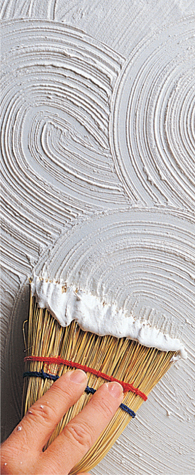
Create a swirl pattern with a whisk broom. Apply the texture paint with a roller, then use the broom to create the design.
Trowel texture material onto the surface, and pile the material in ridges to create an adobe pattern.
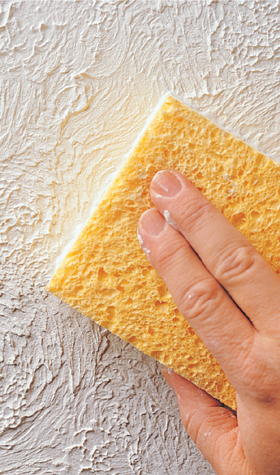
Dab, drag, or swirl a sponge through texture paint to create an endless variety of texture patterns. Or, let the first course dry, then sponge another color on top for a two-tone stucco effect.
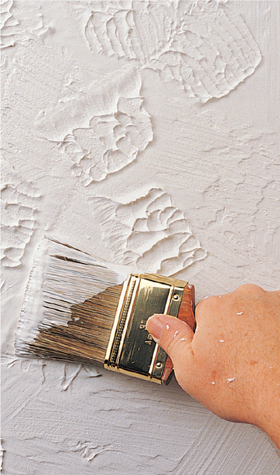
Create a crowsfoot design by applying texture paint with a roller, brushing it out level, then randomly striking the surface with the flat side of the brush.
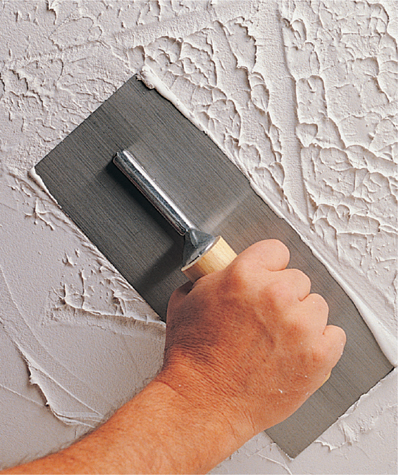
Press the flat side of a trowel into texture paint and pull it away to create a stomp design.
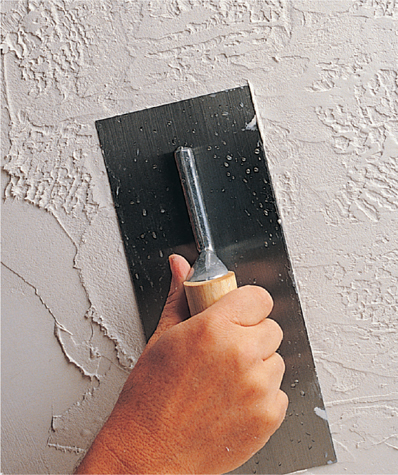
Trowel over a texture pattern when the paint has partially dried, to flatten peaks and achieve a brocade design. Clean the trowel between strokes with a wet brush or sponge.